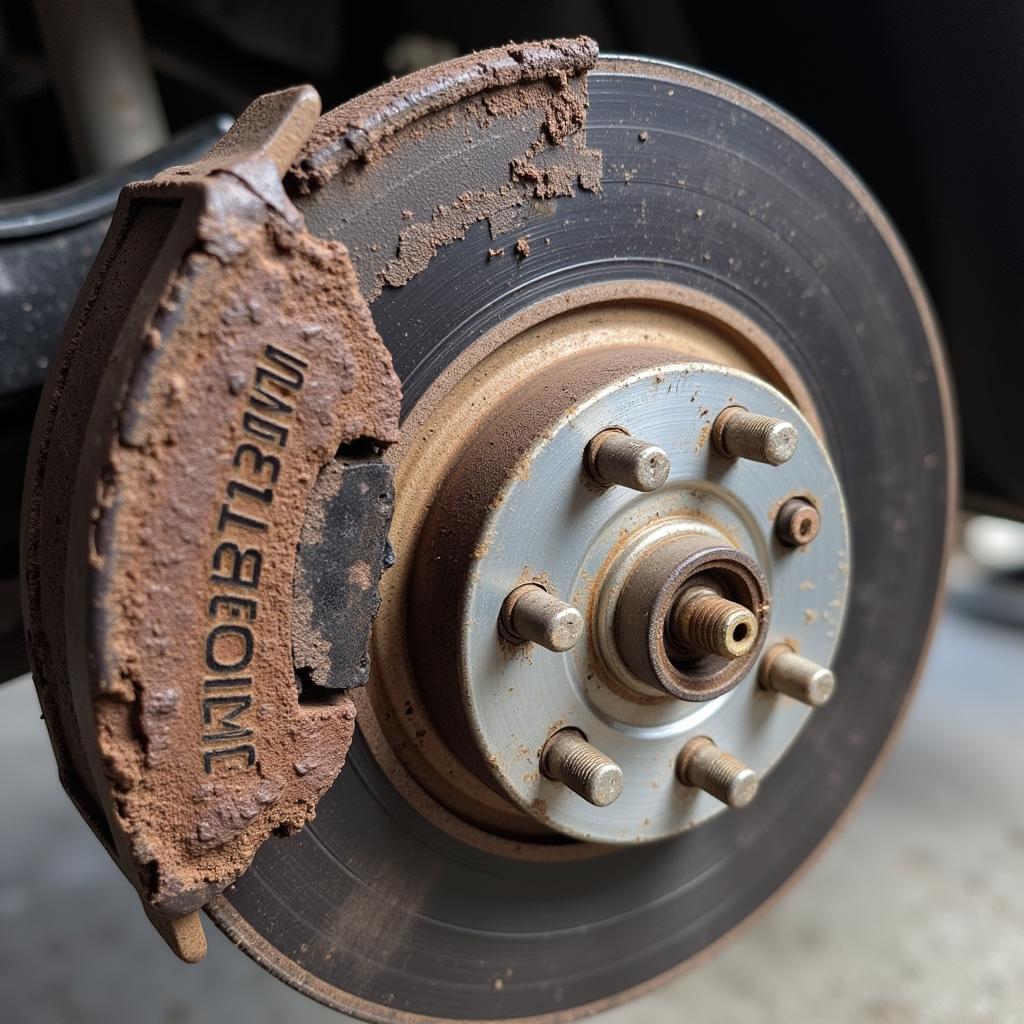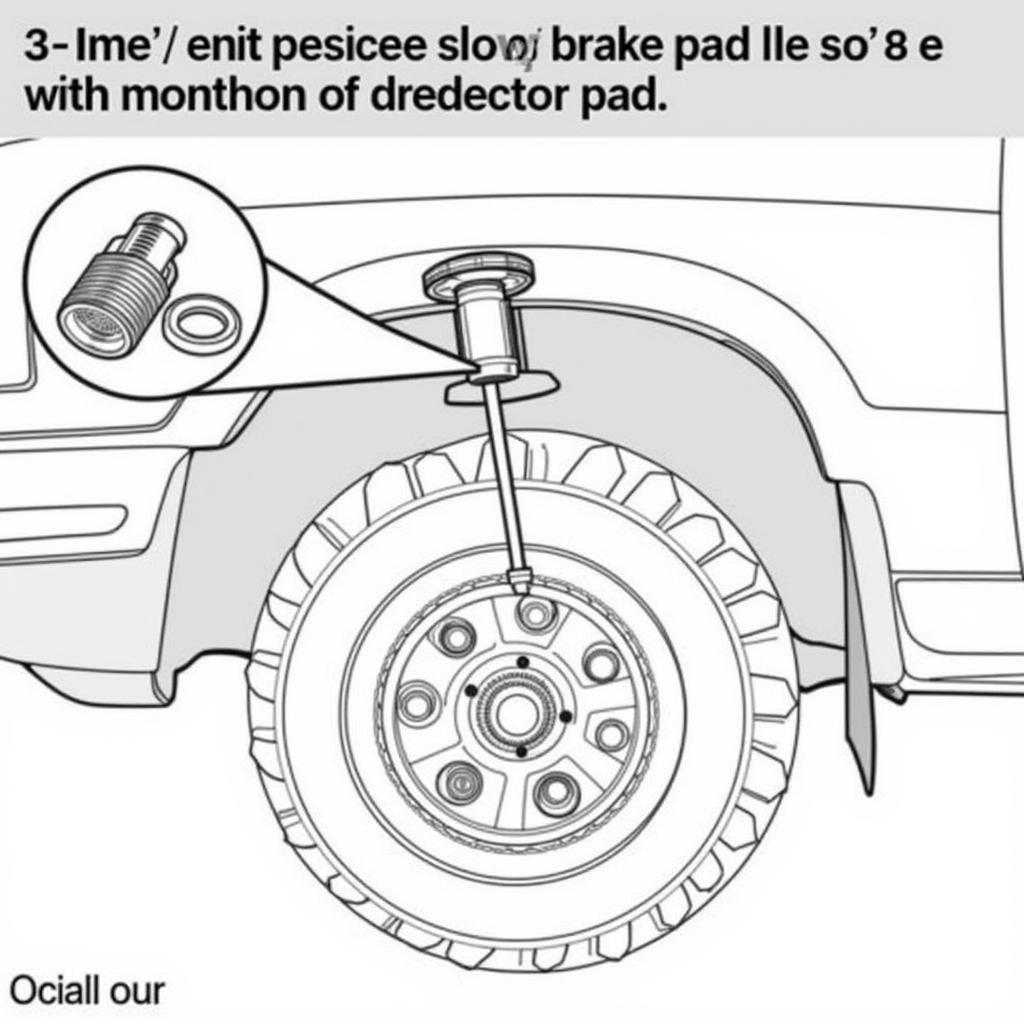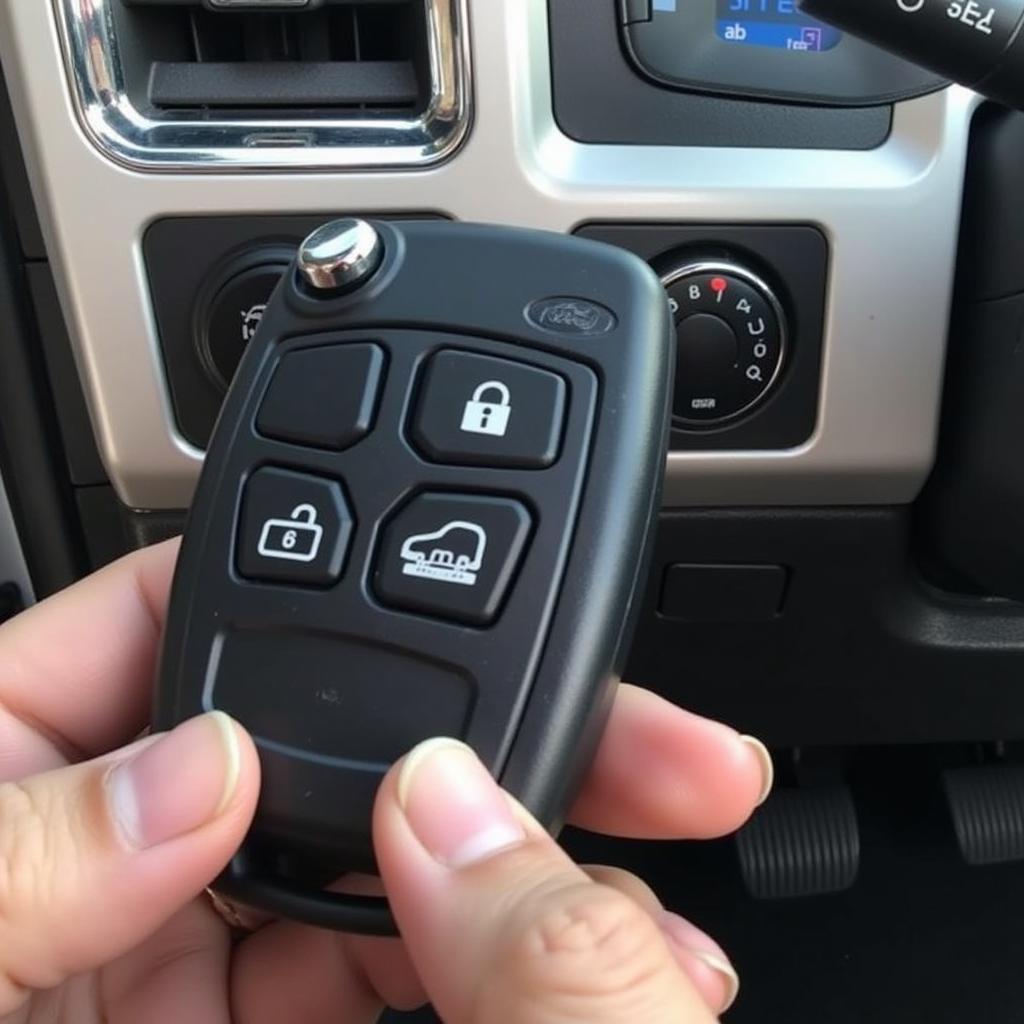If you own a 1997 Ford Explorer, you might encounter a common issue: the brake pad warning light illuminating on your dashboard. This light typically indicates worn brake pads, reminding you to inspect and potentially replace them. This guide dives deep into 1997 Ford Explorer brake pad warning sensors, covering their functionality, symptoms of problems, and step-by-step troubleshooting.
Understanding Brake Pad Warning Sensors
Your 1997 Ford Explorer uses a basic yet effective system to alert you about worn brake pads. Embedded within the brake pad material itself is a sensor, essentially a small metal tab. As the brake pad wears down over time, this tab eventually comes into contact with your brake rotor when you apply the brakes. This contact completes a circuit, triggering the brake pad warning light on your dashboard.
Common Symptoms of a Faulty Sensor
While the illuminated brake pad warning light is the most obvious sign, other symptoms might arise from a faulty brake pad sensor in your 1997 Ford Explorer. These can include:
- Squealing or screeching noises when braking: Though often a sign of worn brake pads, these sounds can also point to a malfunctioning sensor.
- Intermittent brake warning light: If the light flickers or turns on and off inconsistently, the sensor might have a loose connection or be damaged.
- Brake warning light stays on even after replacing brake pads: This scenario often indicates a faulty sensor or an issue with the sensor wiring.
Troubleshooting Brake Pad Warning Sensor Issues
If you suspect a problem with your brake pad warning sensor, here’s a step-by-step guide to help you troubleshoot:
-
Check the Brake Pads: This step is crucial even if you suspect a sensor issue. Visually inspect your brake pads for wear. If they appear thin or worn down, replacement is necessary.
 Worn Brake Pads on a 1997 Ford Explorer
Worn Brake Pads on a 1997 Ford Explorer -
Inspect the Sensor Wiring: With the worn pads removed, locate the sensor wiring harness connected to the brake pad. Examine it for any signs of damage, such as cuts, fraying, or corrosion. Repair or replace the wiring if needed.
 Brake Pad Sensor Wiring Harness on a 1997 Ford Explorer
Brake Pad Sensor Wiring Harness on a 1997 Ford Explorer -
Test the Sensor Continuity: Using a multimeter, check for continuity in the brake pad sensor. Connect the multimeter leads to the sensor’s terminals. If the multimeter shows continuity, the sensor is likely functioning correctly. A lack of continuity suggests a faulty sensor requiring replacement.
-
Inspect the Sensor Mounting: Ensure the brake pad sensor is correctly mounted and secured in its designated slot within the brake pad. A loose or improperly installed sensor can cause intermittent warnings or malfunctions.
 Brake Pad Sensor Mounting on a 1997 Ford Explorer
Brake Pad Sensor Mounting on a 1997 Ford Explorer
“It’s important to remember that brake pad wear sensors are designed to be a one-time use component. Replacing them along with your brake pads is always the recommended practice to ensure accurate and reliable brake wear indication.” – John Davis, Senior Automotive Technician at Ace Mechanics.
Conclusion
Addressing brake pad warning sensor issues in your 1997 Ford Explorer is crucial for maintaining optimal braking performance and safety. By understanding how these sensors work and following the troubleshooting steps outlined above, you can diagnose and resolve potential problems effectively.
Remember, if you’re uncomfortable working on your vehicle’s brake system, it’s always best to consult a qualified mechanic for assistance. Safe driving starts with a well-maintained braking system!


